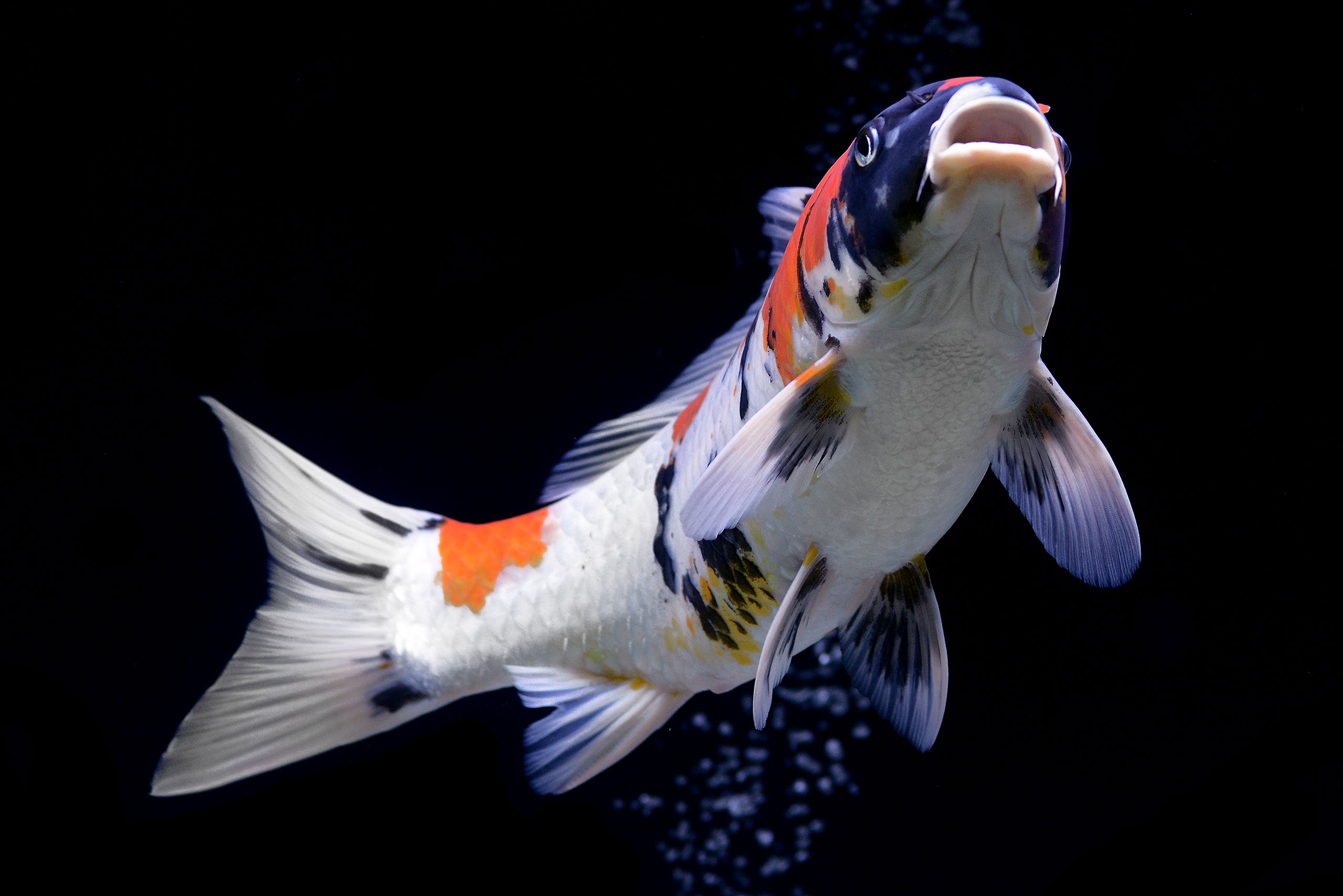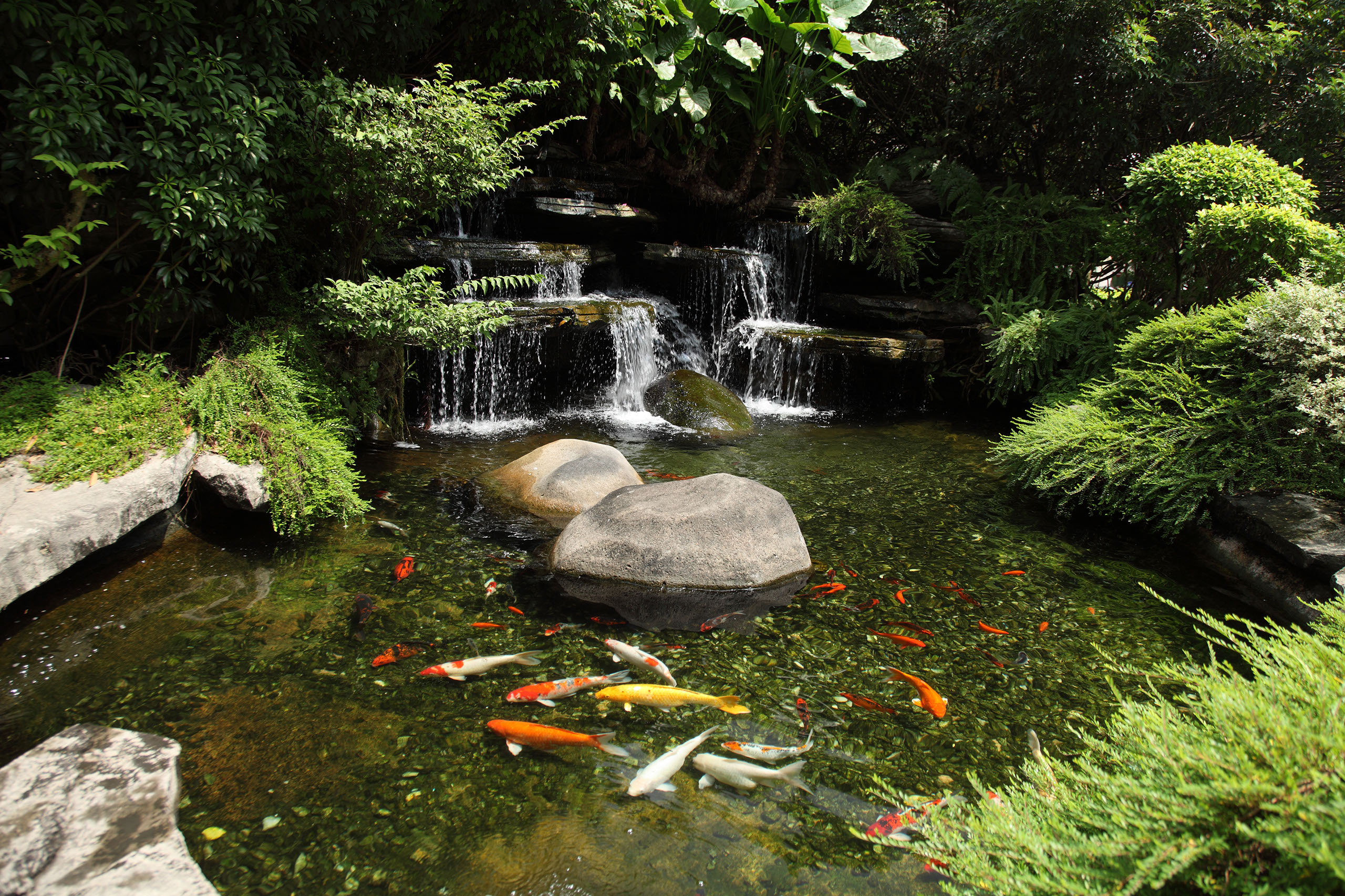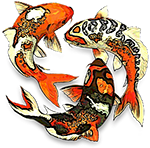Koi Growth Comparison
Photos of a Koi taken over time are useful in understanding development of Conformation, Color, & Pattern
Both of these fish had the benefit of spending time in Brett Rowley’s Mud Pond. The first thing you notice when a fish has spent time in a well managed mud pond is the extreme growth rate. The Bekko (bred by Brett) went from 16″ to 22″ in just 6 months during 1998. {ed: Aware that the date stamps on the two photos indicate this is a 19 month span, not 6 months as the author states.} The Showa went from 4″ to 11″ in just 5 1/2 months during 1999. Details of their development are described below.
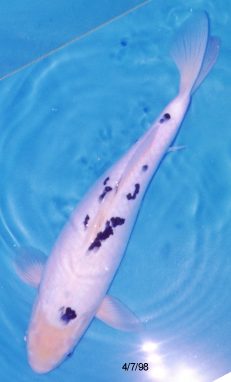
April 7, 1998
16″ Bekko
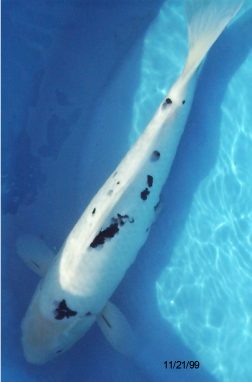
Nov. 21, 1999
24″ Bekko
DISCUSSION
Its hard to imagine that the photo on the right is a much longer fish than on the left because a thin fish appears long in a photo. However, the conformation is what is important. The photo on the right shows an improved & now excellent conformation. You can see the change along the whole body, wider head, wider shoulders, and thicker tail. The white on the fish is very good, however the head remains a little yellow. I believe that the head will eventually clear. As you can see, it has already “whitened” up some.
I do not have a photo from when this Bekko came out of the mud pond. One thing that happened was that a lot of the sumi (black) disappeared. For some reason sumi seems to be more variant in a mud pond than either hi (red) or white. Water chemistry plays a big role, but so does the quality of the sumi. This sumi is a very high quality and now a year later it is coming back very strong. In fact, in the photo above, you can see black rays on the pectoral fins that were not present 2 years earlier. This is a very desirable trait in a Bekko.
I think this Bekko will finish out very nicely in a couple more years as the head whitens & the sumi finishes.

June 26, 1999
4″ Showa
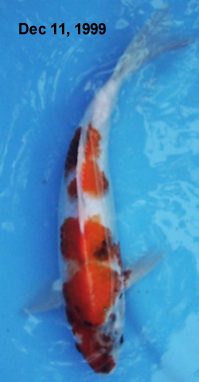
Dec. 11, 1999
11″ Showa
DISCUSSION
It will be interesting to watch this little Showa continue to develop. It is still a very young fish & has a long way to go, however, it has a famous lineage. This Showa is the direct child of the famous “Inazuma (Lightening bolt) Showa” from Dainichi Yorijyo. The Inazuma showa was the All Japan Show winner in 1991, and was owned by Masao Kato until its demise last year (1998).
This particular showa is from the second spawning of the Inazuma showa. It was brought to Houston by Shigeru Mano of Dainichi Yorijyo in the spring of 1999. From there it came to Brett’s Fish Farm where it spent the summer and fall in an earthen pond.
Again, the first thing about this fish is the improvement of conformation. It is still young and is not finished in terms of conformation, but look how it is already growing with respect to the size of its head and thicker body. Don’t expect this kind of growth outside of a mud pond or at least not in the 1,500 gallon pond that I have in my back yard.
With a showa, you must first start with a pleasing kohaku pattern. This fish has a nice 4 step pattern that is well balanced. Although it is a little heavy on the head & nose, it does break nicely above the eyes so as not to be too overpowering. The hi (red) also stops a little soon before the tail, but if the color stays strong & the sumi fills in well, this stop will not be a problem.
As mentioned on the Bekko above, the sumi can go through some unusual changes in a mud pond. Notice how the motoguro (black base in the pectoral fins) disappeared. I’m not concerned about this & believe that it will actually come back in another year. However, one fin did develop some hi in the base. It will likely never go away, but it also indicates a strong hi plate.
You may have heard that hi “does not grow with the fish” or will not “come up”. Notice the 3rd & 4th hi steps. Both of these actually “grew” in size. This is where bloodlines become important. To understand “potential” of the hi, you must understand terms such as “quality”, “thickness”, “depth”, “sashi”, etc. When you can identify those things by sight, then you will be able to tell whether the hi is stable, shrinking, or coming up. Personally, I think you can only grasp these concepts if you follow the development of fish from a quality bloodline & witness how they change.
After the hi in a showa, you must analyze the sumi. You may think that this fish is an ugly showa because it doesn’t have much sumi & what it does have is splotchy. You have to realize that this fish is a baby. I want a fish that will “finish” after it is over 20″ long. If the sumi was thick & full at 11″ it would be finished now & be very pretty at this size. Then at 20″, the sumi would likely overpower the fish and no longer be attractive. As it is, I think it will end up with too much sumi on the head, but we shall wait & see. I am willing to bet the quality of the future sumi based on this Showa’s famous bloodline.
PS (Something I like to point out about Brett’s Koi Farm, he does not use ANY color enhancers. Color enhancers have their place in finishing a koi, but in the development of babies, Brett wants to see the true quality of the red. Now, go back & look at the hi on this showa and you will appreciate how rich it is.)
